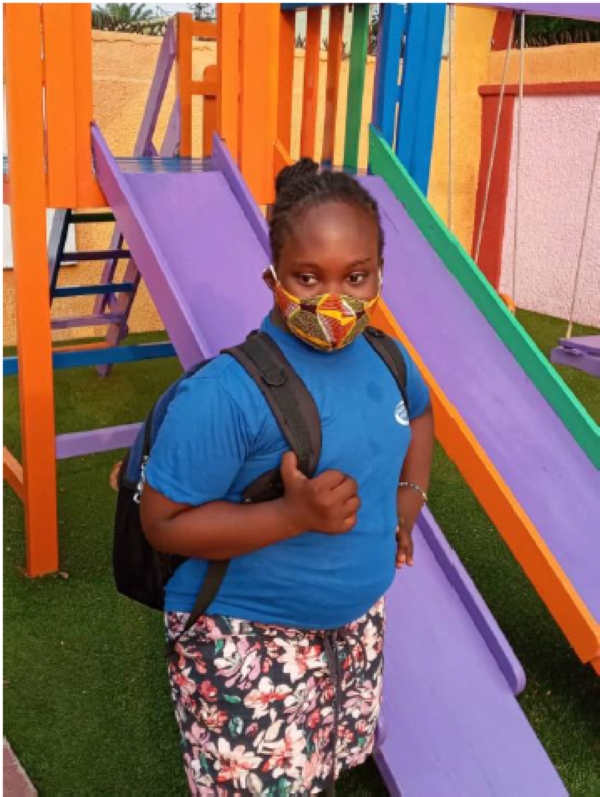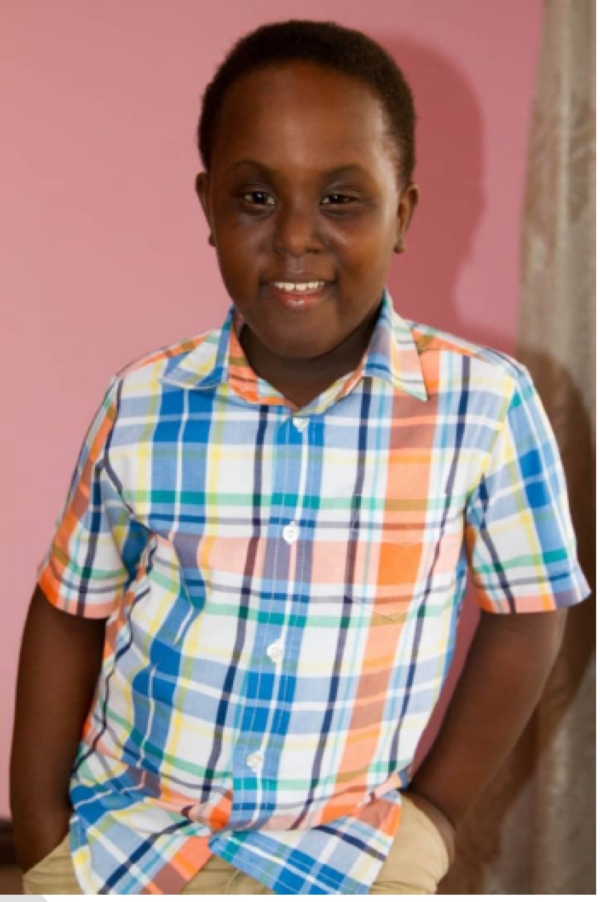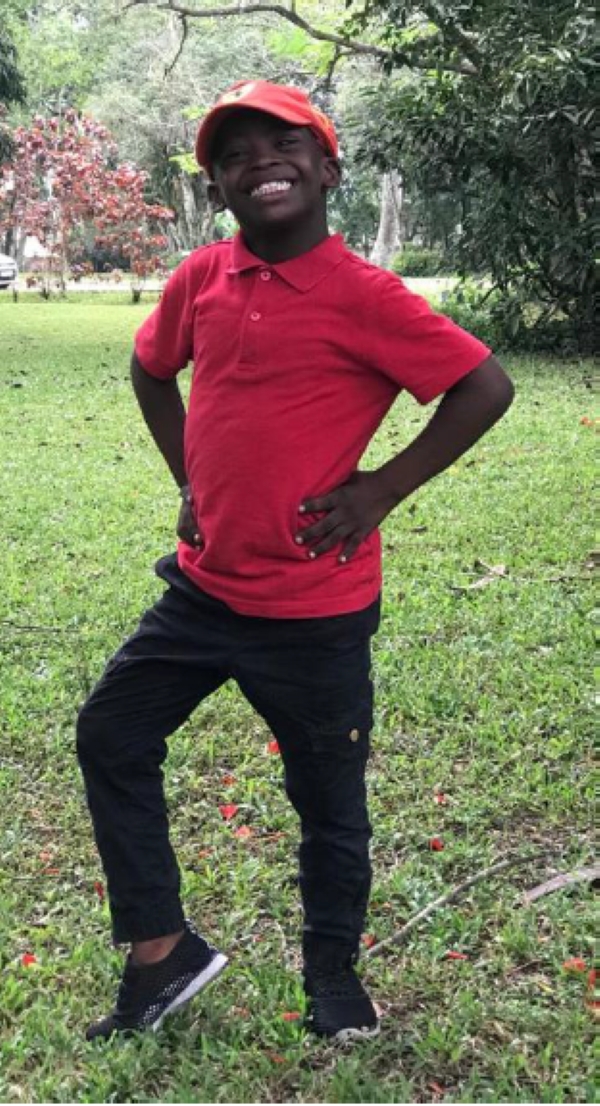World Down Syndrome Day, March 21, 2021 – Connect
 World Down Syndrome Day (WDSD) is a global awareness day that has been celebrated since 2012
World Down Syndrome Day (WDSD) is a global awareness day that has been celebrated since 2012
World Down Syndrome Day (WDSD) is a global awareness day that has been celebrated since 2012. This day allows communities around the world to celebrate the contributions of persons with Down syndrome. Yes, persons with Down syndrome have valuable contributions to make to their societies and communities. It is also a day to create awareness about Down syndrome and advocate for their rights and inclusion. The date itself has been selected for very clever reasons; it is held on the 21st day of the 3rd month, which is a hat-tip to the uniqueness of the triplication of the 21st chromosome which leads to Down syndrome.
The theme for this year’s (March 21, 2021) celebration is ‘CONNECT’. This theme was chosen in response to how Covid-19 is making all of us feel – disconnected. It is a call to action for us to find new and innovative ways to connect and to focus on improving connections to ensure that all people with Down syndrome can CONNECT and participate on an equal basis with others.
What is Down syndrome?
It is when a person is born with three copies of the 21st chromosome. It exists in all regions across the globe and commonly results in variable effects on learning styles, physical characteristics and health. Typically, a child is born with 46 chromosomes but in persons with Down syndrome, it is 47 chromosomes because of the extra copy of the 21st chromosome.
This extra copy is responsible for how the baby’s body and brain develop in the womb and after birth, this may result in physical and intellectual challenges for the child, such as heart defects, gastrointestinal defects, immune disorders, respiratory disorders, obesity, spinal issues, dementia, leukaemia, among others. Although persons with Down syndrome seem to look and act in a similar manner, just as all human beings, no two individuals with Down syndrome are the same, each person may have different abilities.
Some common physical features of Down syndrome
A flattened face, especially the bridge of the nose
Almond-shaped eyes that slant up
A short neck
Small ears
A tongue that tends to stick out of the mouth
Tiny white spots on the iris (coloured part) of the eye
Small hands and feet
A single line across the palm of the hand (palmar crease)
Small pinky fingers that sometimes curve toward the thumb
Poor muscle tone or loose joints
Shorter in height as children and adults
Types of Down syndrome
There are three types of Down syndrome. People often can’t tell the difference between each type without looking at the chromosomes because the physical features and behaviours are similar.
Trisomy 21: About 95% of people with Down syndrome have Trisomy 21. With this type of Down syndrome, each cell in the body has 3 separate copies of chromosome 21 instead of the usual 2 copies.
Translocation Down syndrome: This type accounts for a small percentage of people with Down syndrome (about 3%). This occurs when an extra part or a whole extra chromosome 21 is present, but it is attached or “trans-located” to a different chromosome rather than being a separate chromosome 21.
Mosaic Down syndrome: This type affects about 2% of the people with Down syndrome. Mosaic means mixture or combination. For children with Mosaic Down syndrome, some of their cells have 3 copies of chromosome 21, but other cells have the typical 2 copies of chromosome 21. Children with Mosaic Down syndrome may have the same features as other children with Down syndrome. However, they may have fewer features of the condition due to the presence of some (or many) cells with a typical number of chromosomes.
Causes and risk factors
It is not yet known why this occurs, but according to the CDC, Down syndrome has always been a part of the human condition (https://www.cdc.gov/ncbddd/birthdefects/downsyndrome.html#ref) However, one risk factor that increases the chances of having a child with Down syndrome may be a woman’s age at conception. Women who are 35 years or older when they become pregnant are more likely to carry a pregnancy affected by Down syndrome than women who become pregnant at a younger age. However, the majority of babies with Down syndrome are born to mothers less than 35 years old, because there are many more births among younger women (https://www.cdc.gov/ncbddd/birthdefects/downsyndrome.html#ref).
Unfortunately, in Ghana where I live, there is no data on the occurrence of Down syndrome in the population. According to Down Syndrome International, about 1 in 700 births of Down syndrome occur in the United States of America and between 1 in 1,000 and 1 in 1,100 live births according to the World Health Organization (http://www.who.int/genomics/public/geneticdiseases/en/index1.html ).
Diagnosis
Diagnosis can be made during pregnancy and right after birth. There are tests that can indicate the likelihood or chances that a mother is carrying a baby with Down syndrome. But these tests can't give a definitive diagnosis on whether the baby has Down syndrome. In places like the US, screening for Down syndrome is offered to expectant mothers as part of their antenatal care, in the first and second trimesters.
Diagnosis during pregnancy
If a mother’s screening test results are positive or show a high risk of having a child with Down syndrome, further diagnostic tests can be done.
Chorionic villus sampling (CVS). In CVS, cells are taken from the placenta and used to analyze the fetal chromosomes. This test is typically performed in the first trimester, between 10 and 13 weeks of pregnancy. The risk of pregnancy loss (miscarriage) from a CVS is very low.
Amniocentesis. A sample of the amniotic fluid surrounding the fetus is withdrawn through a needle inserted into the mother's uterus. This sample is then used to analyze the chromosomes of the fetus. Doctors usually perform this test in the second trimester, after 15 weeks of pregnancy. This test also carries a very low risk of miscarriage.
Diagnosis for newborns
After birth, the initial diagnosis of Down syndrome is often based on the baby's appearance; but the features associated with Down syndrome can be found in babies without Down syndrome, so the health care provider will likely order a test called a chromosomal karyotype to confirm the diagnosis. Using a sample of blood, this test analyzes your child's chromosomes. If there's an extra chromosome 21 in all or some cells, the diagnosis is Down syndrome. In Ghana, this test is not available, Laboratories send the blood sample to South Africa and results take 10 – 14 days (exactly what we did seven years ago to diagnose my son). However, in writing this article, what my search revealed is that blood samples are still sent to South Africa but with the impact of COVID -19, this service is no longer available in the country.
Treatment and Care
Although Down syndrome in itself has no cure, there are a variety of treatments and therapies to address the unique medical and developmental needs of persons with Down syndrome. These interventions fall into three broad categories: edical treatments, physical and behavioural as well as educational therapies. Early interventions for infants and children with Down syndrome have been proven to make a significant improvement in their quality of life. Persons with Down syndrome may require different interventions and service at different stages of their life.
What does the future hold for persons with Down syndrome?
Contrary to the beliefs held by some about persons with Down syndrome not amounting to anything in life, being a burden and similar sentiments especially in these parts of the world, when CONNECTed to appropriate interventions, persons with Down syndrome live very fulfilling lives. They learn to read and write, learn trades, hold jobs and contribute effectively to their communities.
PUTTING A FACE AND VOICE TO DOWN SYNDROME

Although uncomfortable, my safety depends on masking up. Please do same, too.
‘My name is Todah, I am 9 years old and live with Down Syndrome. My brother says I am the most confident (I don’t understand this word yet, but it sounds like something positive) person he knows. He also says I have a larger than life personality and light up every room I walk into. I like being outdoors and like to hang out with my friends and family and actively give my best in every activity. My favourite place is the beach, although I’m scared of the sea. My best friends are in my school, Wilmore Christian Academy and my dance studio, Vivies’ Dance Factory, at Spintex. My friends support me in the activities I struggle with. I love modelling a lot, even more than dancing.’
Todah Frimpomaa Berchie
Tema

Looking into the future with so much hope
‘Hi Everyone, I am Theodore, a 7-year-old boy living with Down Syndrome. I am a class 1 pupil of Little Treasures Montessori School, Roman Ridge. I love playing football and my teammates are bigger than me, but that’s ok. The last time I played I had a scratch on my knee, it really hurt. I hope Covid-19 will be over so I start playing again with my friends in my community. On this special day, I want to say hello to Daddy and Mummy, my Sisi, my friends at school and church, my teachers and all. I connect with all these people and life for me, is so cool because they love and support me in everything I do.’
Theodore Komla Mawutor Denanyoh
Accra

There is so much to me than my diagnosis; look beyond that as I am
Jonathan is my name. I'm a 3-year-old happy boy living with Down Syndrome, with three bigger brothers. As the last boy, I love spending time with my big brothers who support in everything I do. My dream is to grow and spread love in the world. My eyes give me problems now but my mom is always taking me to doctors to help me see better. I love music, dancing and football. I'm very kind and like to share. I can't wait to start school so I will continue to scribble, use my big brothers’ tablet and pretend I have zoom lessons, wear their school uniforms, shoes and bags. I live a very normal life at home, church and my community. My mom says I am God’s gift to her and the world and I like that a lot.
Jonathan Winnambe Aguriba
New Adenta

I love the camera and my mom allows me!
‘My name is Kofi, I am 7 years old and live with Down syndrome. I am in class 2 at Multikids Inclusive Academy in Adjiringano. My mom was recently told that I have asthma and because of Covid-19, my mom is teaching me at home this term. I am very friendly and love to make friends by saying ‘hi’ to new people I meet. I love to read, write, play drums and play football. I also dance at the Vivies Dance Factory in East Legon.
Staying connected is very important to me because I am a happy person and love to see everyone happy around me. That is why I love hugging and being hugged. I love the camera and posing for pictures. My mom sometimes calls me KEY or Dapper Boy’ I also love it when I see other persons with Down syndrome, whether on TV or in person, it makes me feel connected to them.
Kofi Entsi Yankson aka KEY aka Dapper Boy
Ashale-Botwe
Written by Debbie Mangortey, a mother of a child with Down syndrome (this article was written with information reviewed from the CDC (http://www.who.int/genomics/public/geneticdiseases/en/index1.html), Mayo Clinic (https://www.mayoclinic.org/diseases-conditions/down-syndrome/symptoms-causes/syc-20355977 ), Down Syndrome International(https://www.ds-int.org/Pages/Category/what-is-down-syndrome ) websites and this parent’s experiences of caring for her child). She also shares their journey with Down syndrome through her blog, https://debbieskey.wordpress.com/
Trending Features

Ghana’s Horticultural sector: A blooming force for inclusive growth and a 24-hour economy
08:34
Dominic Ayine on panic mode as Kwabena Adu – Boahene sues?
12:23
Has EOCO read the NSB Act? Or has Banana Republic been activated under John Mahama?
12:07
Why is A-G quiet about allegations of bribery against him?
11:58
Kelvin Gyimah: Dr Bawumia’s only sin
00:41
Papal ambitions and the Charismatic views on Cardinal Turkson’s quest
02:37




